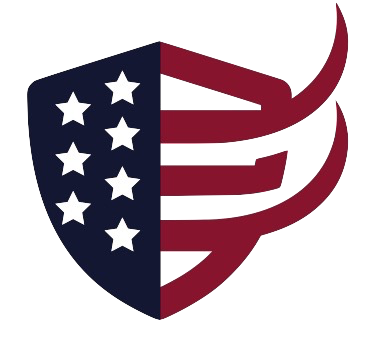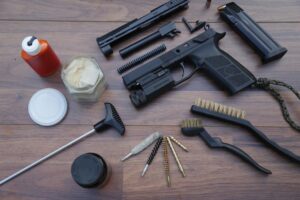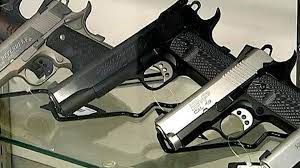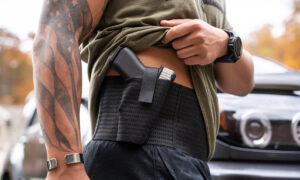Equipment check: Tips for setting up your duty belt
Importance of Proper Duty Belt Setup
A properly set up duty belt allows officers to access equipment efficiently during critical situations. The goal is for everything to have a designated place that can be reached by touch without taking eyes off a scene. Proper planning prevents overcrowding and positioning items to avoid interference when accessing other gear.
Goals for Equipment Placement
- Ensure equipment locations can be easily identified by touch
- Enable smooth transitions between gear like handcuffs, OC spray, and firearms
- Prevent contact or blocking between items to avoid hindered access
- Allow return of equipment to set positions without looking away from ongoing situations
Categorizing Officer Equipment
Officer equipment can be divided into three main groups:
- Duty belt gear
- Patrol vehicle supplies
- Personal items for on/off duty carry
This article focuses specifically on recommendations for duty belt setup.
Duty Belt Equipment
Standard Equipment Items
While personal preferences come into play, standard duty belts contain relatively similar components. Understanding proper positioning optimizes their use.
Handcuffs
The front and center of the belt should contain the handcuff case for access by either hand. Carrying two sets lets you quickly secure multiple suspects. A handcuff key can attach to a belt keeper, with a backup key in a pocket.
OC Spray
The OC spray case mounts next to the handcuff case for easy transition between the two with either hand if needed. This also enables spraying directly from the holster if warranted.
Firearm
The firearm and holster follow the OC spray case toward an officer’s strong shooting side. A belt keeper on each side helps stabilize the holster.
Holster
A secure duty holster should have active retention and a tension device to hold the gun firmly during rigorous activity. Quality materials withstand wear and debris over long term use.
Tactical Light
Attaching a tactical light to the duty weapon provides illumination in low light conditions without tying up a hand. Switch location and mode options allow momentary or constant-on functionality.
Ammunition
Carrying adequate ammo is vital. Semi-auto pistols normally utilize a minimum of two magazines carried facing forward in pouches centered between the holster and weak side gear.
Magazine Pouches
Frontward facing magazine storage allows fast access and smooth reloading without requiring manipulation around other obstructions.
TASER
TASER placement in a cross-draw position prevents confusion with the firearm while enabling a reaction side draw by either hand. A weak side draw also keeps the reaction arm clear of the duty holster.
Portable Radio
The portable radio is a critical communication tool, so its position balances access and security. An over the ear microphone headset allows hearing transmissions without broadcasting to nearby suspects.
Earpiece and Microphone
Routing over the ear secures the receiver and mic tightly against the head for clear audio and discreet communications. Sound travels directly into the ear canal without public broadcast.
Baton
A sturdy baton rides at an officer’s weak side within easy access during altercations. Collapsible options optimize space while providing formidable defense when expanded.
Additional Considerations
Backup Weapons
Many officers carry a backup pistol for redundancy. Popular options mirror the duty gun caliber or use small revolvers for simplicity. Ankle or vest mounts secure the gun, while belt carriers or pockets enable reloading.
Semi-Automatics
Full size or compact versions of an officer’s standard semi-auto sidearm maintain training and muscle memory between the duty gun and backup. Magazine compatibility streamlines ammo supplies.
Revolvers
Compact 5 or 6 shot revolvers offer a low maintenance backup gun. Their operation differs from semi-autos but provides a reliable extra weapon if needed.
Placement Restrictions
No Equipment on Rear of Belt
The duty belt should not contain any gear behind the waistline. Accessing rear equipment requires releasing a hand grip and twisting during confrontations. Falling could also drive items into the back. Keep the rear clear.
Other Important Gear
Ballistic Vest
A concealable armored vest provides protection against numerous firearm threats. Officers should don body armor for any preplanned actions and field work requiring increased caution.
Flashlight
A small backup light in a pocket covers situations where additional illumination would help. Fights, building clearing, and traffic incidents all commonly occur in low light.
Folding Pocket Knives
Having multiple automatic opening folding knives in pockets enables accessing a blade with either hand quickly.Their presence frees up the duty knife for other members of an arrest team.
Conclusion
Proper Setup Enhances Officer Safety
Arranging duty belt equipment appropriately contributes significantly to officer safety. Planning item locations in relation to an officer’s shooting sides allows accessing gear efficiently without looking away from ongoing threats.
Allows Muscle Memory Access
Consistent setups enable reaching equipment reliably through touch and muscle memory. This facilitates smoothly transitioning between arrest, self-defense, and firearm deployment tools during intense encounters.
Reduces Confusion in Stressful Situations
Careful equipment positioning prevents items from contacting each other in ways that could interfere with access. It also minimizes overcrowding and confusion during high stress responses. Setups tailored to body types and shooting preferences enhance user performance.
FAQs
Q: How many handcuffs should officers carry on their duty belt?
A: Carrying two sets of handcuffs enables restraining multiple suspects if needed. Extra handcuffs can mount in a double stack case or a pocket carrier.
Q: Why place the TASER in a cross-draw position?
A: Cross-draw TASER positioning prevents confusion with firearm draw motions while keeping it accessible to either hand. This avoids tangle situations during reactions.
Q: What gear should absolutely not mount on the rear duty belt?
A: No items should be placed directly behind an officer’s waistline to avoid contact during weapon access and potential back injury from falls. Keep the rear belt area completely clear.
Q: Why wear a ballistic vest whenever in uniform?
A: Concealable body armor provides invaluable protection against numerous firearm and stabbing threats. Officers face unpredictable dangers and should maximize safety through ongoing vest use with uniforms.
Q: How can a radio headset enhance officer communications?
A: Headset radios keep transmissions private without broadcasting to nearby suspects. Their tight ear fit allows hearing dispatch traffic clearly in noisy settings. An integrated mic ensures clarity.






